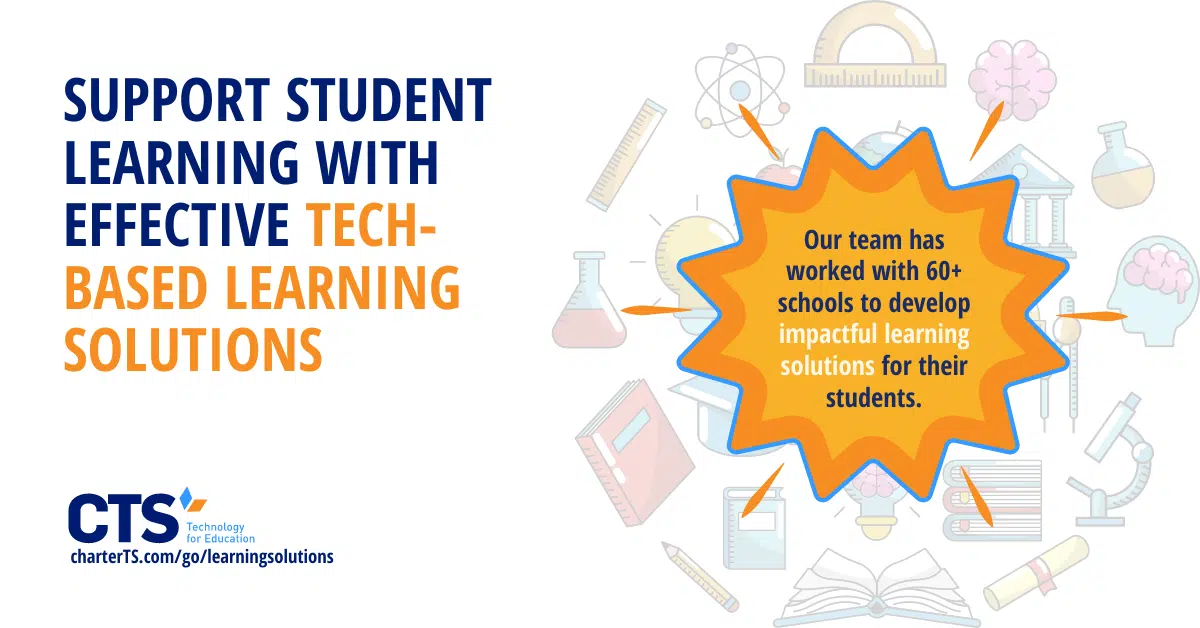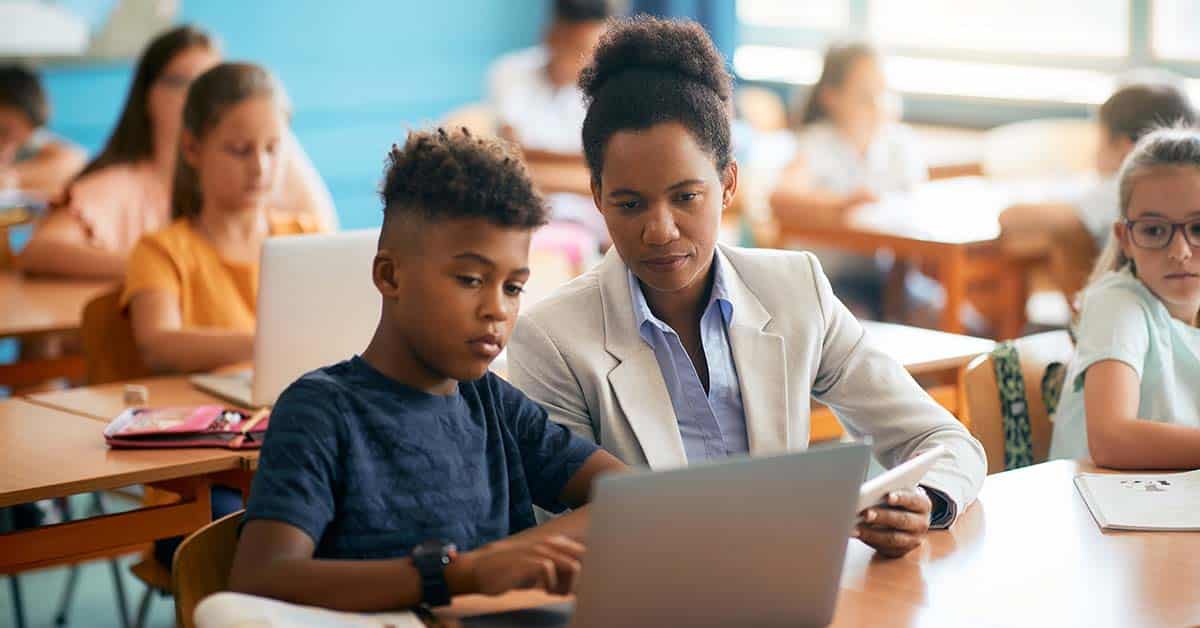Technology-based learning solutions increasingly influence students’ educational experience.
Walk into any school across the country today, and you’re almost certain to see at least one piece of educational technology. In some schools, you’re likely to see hundreds: teachers using SMART boards to demonstrate mathematical concepts, students using Chromebooks to draft essays or view lessons on Google Classroom, or administrators using iPads to check their email while on hallway duty. Needless to say, technology—and the learning solutions it generates—has thoroughly infiltrated students’ educational experience, becoming nearly as fundamental as the school bus, desk, or letter grade system.
Technology-based learning solutions, regardless of their “high” or “low” tech status, directly impact the ability of students to master content, as well as provide teachers with actionable insights into standards mastery. These solutions also expand the very boundaries of the school building, facilitating enhanced parent communication efforts, as well as enabling the kind of remote learning that’s become commonplace with the spread of COVID-19.
Sometimes, “low tech” solutions have a greater impact than “high tech” ones.
When we talk about learning solutions, it’s easy to go to extremes: you may envision state-of-the-art hardware or the most cutting edge data visualization tools. While these items do, indeed, have the potential to impact student achievement, it’s often the “lower tech” learning solutions that are both most impactful and most easily scalable, regardless of a school’s budget or overall technology capacity.
Simply deploying a student information system that includes a parent portal—think PowerSchool—where parents can easily view all of their students’ current grades and assignments can have an outsized impact on students’ educational experience. With the advent of something like a parent portal, schools quickly create a feedback loop between teachers, students, and families whose results can easily translate to changes in daily instruction. In this case, a relatively low tech intervention can yield powerful results in a way that sophisticated cabling systems or upgraded wireless access points simply couldn’t.
Many online instructional platforms differentiate content in real-time to support student learning.
Schools that make extensive use of Chromebooks or other low-cost student devices also often employ online instructional platforms to support students’ content mastery. In many cases, these platforms will differentiate instruction in real-time, allowing students to proceed at their own pace, advancing only after mastering specific standards within a given lesson.
If a student is learning how to multiply and divide fractions, for example, a platform like DreamBox can scaffold instruction to ensure students gain, first, a solid conceptual understanding of fractions, followed by the rules governing numerators, denominators, and so on and so forth, before finally engaging the actual lesson content.
A learning solution like DreamBox has two primary impacts: first, it creates a customized experience for each student depending on their content fluency, and second, it radically transforms the role of the teacher. Rather than delivering a single lesson to a large group of students, the teacher can begin to “float” between individual students, supporting each child with the specific content with which they’re engaging.
Data and assessment systems give teachers the necessary insights to rapidly tailor instruction.
Similarly, data and assessment systems allow teachers to customize their instruction based on students’ content mastery, quickly generating insights that would take hours to extract manually.
Imagine, for instance, that a teacher gives an assessment to his students and wants to gauge performance across a particular standard. Rather than manually reviewing each test, noting each time each student misses a particular question keyed to the relevant standard, and then calculating a percent correct based on overall student performance, the teacher can simply upload student responses to the data and assessment system and, in most cases, download a custom report that differentiates performance by standard.
With these insights in hand, the teacher can then alter instruction accordingly. Perhaps additional days are required to assist students with mastering a particular concept or, alternatively, the teacher can simply move on to the next module, confident in his students’ content mastery.
Learning solutions to support remote instruction have expanded the physical boundaries of the school building.
In an era dominated by remote learning, we would be remiss if we didn’t mention one of the most ubiquitous technology-based learning solutions: video conferencing. Although relatively low tech compared to other interventions, rapid scaling, and effective communication around best practices in video conferencing has dramatically impacted students’ ability to learn during school closure periods. Coupled with other online instructional platforms, video conferencing can at least approximate the in-person learning experience, providing a bridge to the point at which schools are able to resume normal operations.
At CTS, we work with our partners to craft learning solutions suited to their unique missions.
Our team has worked with more than 60 schools across the United States to create learning solutions for their students. From device inventory management to educational data analysis and E-rate service provision, we have the scope and capacity to support your school in using technology to meet its unique mission. Contact us today to learn more about our services and how we can help your school develop learning solutions to positively impact student achievement.




